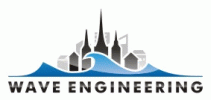The Baltic Sea has been a bridge between many nations and countries for millennia. It was the only highway connecting the Nordic regions to the heart of Europe but also to the east of Europe and even to the Far East for a long time, being not only the key transport route but also, and much more importantly, the major channel of cultural contacts and for the spreading and transfer of competence, as described by the former President of Estonia, Lennart Meri, in his books “Hõbevalge” and “Hõbevalgem” (Silverwhite & More Silverwhite).
The Baltic Sea’s role in connecting people and communities, although diminished for some time during the last century, is rapidly increasing again since the 1990s. In today’s Europe, the role of this water body is extremely important in bringing together different fields of science, culture and art, linking the stable Nordic region and the new, vibrant Baltic countries undergoing intensive development with the classical core of Europe.
We intend to use the analogy of the Baltic Sea bridging different nations and countries, not only in terms of classical traffic connections but specifically in terms of linking and synchronising their thinking, to strengthen the bridge between Humboldtians in the north-eastern section of this water body, and to create new connections between the Humboldt family and the new generation of researchers in this region, also by advertising the Humboldt Foundation’s fellowships among this group.
